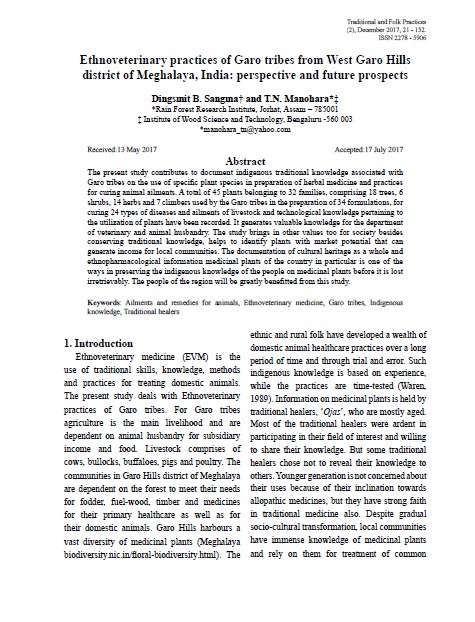Ethnoveterinary practices of Garo tribes from West Garo Hills district of Meghalaya, India: perspective and future prospects
Keywords:
Ailments and remedies for animals, Ethnoveterinary medicine, Garo tribes, Indigenous knowledge, Traditional healersAbstract
The present study contributes to document indigenous traditional knowledge associated with Garo tribes on the use of specific plant species in preparation of herbal medicine and practices for curing animal ailments. A total of 45 plants belonging to 32 families, comprising 18 trees, 6 shrubs, 14 herbs and 7 climbers used by the Garo tribes in the preparation of 34 formulations, for curing 24 types of diseases and ailments of livestock and technological knowledge pertaining to the utilization of plants have been recorded. It generates valuable knowledge for the department of veterinary and animal husbandry. The study brings in other values too for society besides conserving traditional knowledge, helps to identify plants with market potential that can generate income for local communities. The documentation of cultural heritage as a whole and ethnopharmacological information medicinal plants of the country in particular is one of the ways in preserving the indigenous knowledge of the people on medicinal plants before it is lost irretrievably. The people of the region will be greatly benefitted from this study.


